microcontroller badges
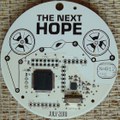
The Next Hope
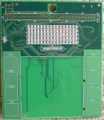
Freescale ColdFire
Flexis JM Badge Board

The Renesas M16C
Platform Evaluation Kit
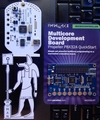
Parallax Propeller badges
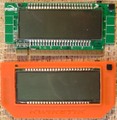
Freescale Kinetis KwikStik
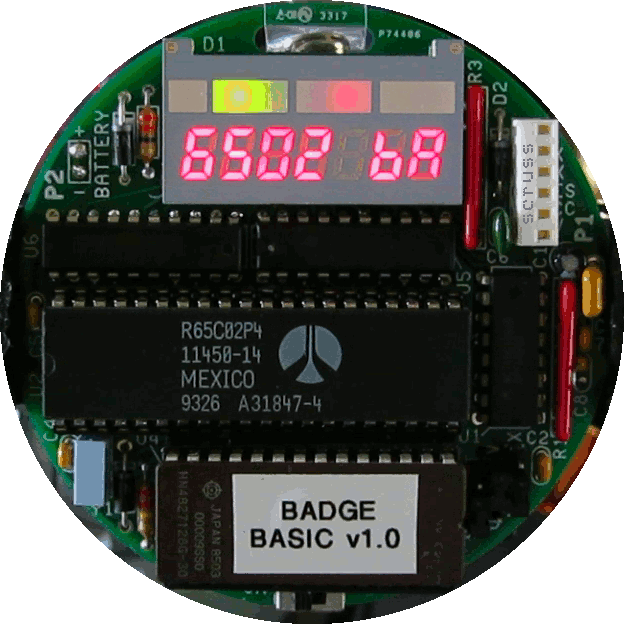
other noteworthy badges
microcontroller badges | ||
|---|---|---|
 The Next Hope |
 Freescale ColdFire Flexis JM Badge Board |
 The Renesas M16C Platform Evaluation Kit |
 Parallax Propeller badges |
 Freescale Kinetis KwikStik |
 other noteworthy badges |
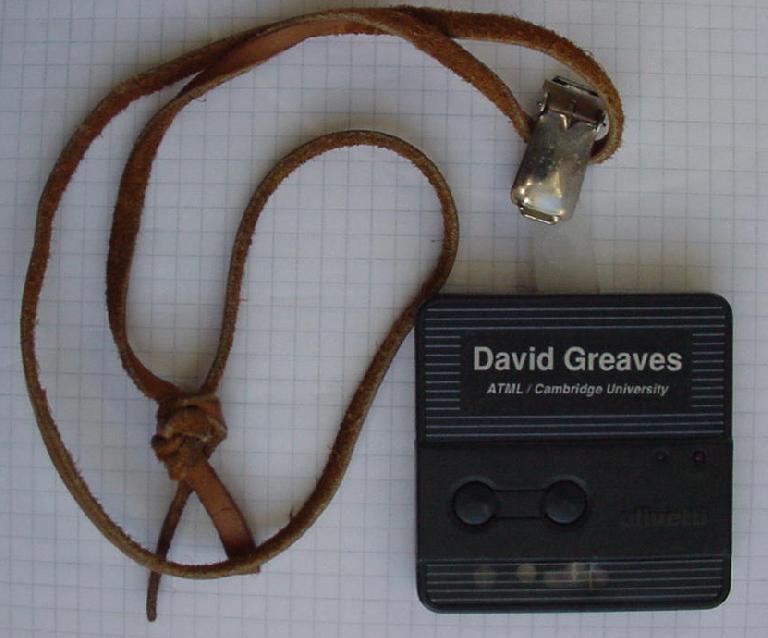
This is my active badge. I wore a badge like this for quite a number of years in the late 80's and early 90's.
This is the last one I was issued with. They were designed originally by Roy Want of Olivetti Research.
The badge operates only in specially-wired buildings, where each room and door has an infra-red transceiver to communicate with the badge.
The badge was used to unlock the buildings where I worked and to give out my location.
In early days, the unix finger protocol was augmented to give out badge locations, but later the WWW was used.
Badge sightings were also used to index multi-media recordings.
To a large extent, people stopped wearing their badges in the office environment once they had a mobile phone.
The Next Hopewas held July 16-18, 2010 at New York's Hotel Pennsylvania. Despite the name, the 2nd floor was full of folks buying and soldering up Arduino Kits (wiki) sold on-site by NY/NJ/CT hacker spaces. There is quite an Arduino community. The 2010 HOPE RFID badge was designed by Travis Goodspeed (blogspot). See also: all his photo sets. He also collected several Evaluation Kits | |
|---|---|

|
Many folks received these
RFID badges and modified the programming and hardware.
The RFID badge was silk-screened to double as a human readable event badge! The unpopulated PC board was used for the remainder of the attendees. The main chip is a TI MSP430: X430F2618T rev F Click here for a zip file of all the presentations from a (NON-HOPE) TI all-day seminar including MSP430; Zigbee, RFID and wireless tutorials The TI MSP430 LaunchPad is my other MSP430 system. |
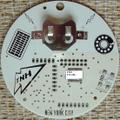
|
The rear showing the battery holder.
Folks were advised to remove the battery if they didn't want to be tracked in real time. The missing FTDI FT232RL chip and USB connector were sold separately for programming the TI MSP430 via USB for those without JTAG adapters. |

|
It's the same form factor as
Scho-Ka-Cola chocolate!
(English wiki)
I put it in the tin for RF shielding! |

|
I wore my
Billie D. Husky
badge holder with the HOPE badge
and the Freescale badge scrolling the message "NOT RFID!". A few folks already have the Freescale badge and others were intrigued by how much was included in the base product compared to a bare Arduino. |
Parallax Propeller badgesThe Parallax P8X32A Propeller is a unique architecture:eight symmetrical cores ("cogs") sharing a central bus (wikipedia) | |
|---|---|


|
Nick Lordi is a major supporter of the Parallax Propeller and FORTH for robotics. He kindly gave me his Parallax Propeller badge from DEFCON 20 (July 2012) starring Anubis! Just add connectors for VGA and PS2 (kybd & mouse) to make it a complete system! Developer & tech info is here |

|
Radio Shack sold the
P8X32A Propeller QuickStart
(same chip but with 40-pin Accessory Socket). Propeller QuickStart Guide |


|
Parallax Electronic Conference Badge: Hackable microcontroller badge designed for real peer-to-peer interaction. Badges were on sale for $29.99 in three varieties: Guest (blue) Staff (white) Speaker (black). They have been replaced by the $50 Badge WX for BlocklyProp I like the OLED and the way the back clearly documents the TRRS connector, URLs and all connections. |


|
Features
|

|
Other Propeller based devices: Vince Briel's PockeTerm uses the Parallax Propeller chip as a serial terminal (just add VGA monitor, PS/2 keyboard). hack-a-day reviewed it |

|
The front shows the
|
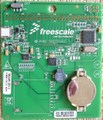
|
The rear shows
|
It's amazing what you can do when you embed a MCF51JM128 ColdFire USB MCU, a MMA7260QT 3-axis accelerometer, a MC34673 Li-ion battery charger IC, a MPR084 capacitive touch sensor along with an LED screen into an event ID badge. Add a little ingenuity and programming, and you can have a multifunctional badge - even a toy.
The Flexis JM Badge Board doubles as an event badge for the Freescale Technology Forums around the world and provides design engineers with a low cost development board to develop a unique application.
 The bare board and in the silicone case
The bare board and in the silicone case
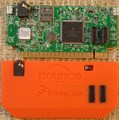 The 40X256 microcontroller is on the back
The 40X256 microcontroller is on the back

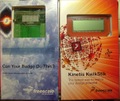 the box is similar to the
Coldfire JM Badge Board
the box is similar to the
Coldfire JM Badge Board
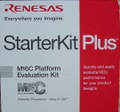
 The Renesas M16C Platform Evaluation Kit
The Renesas M16C Platform Evaluation Kit
Yeah, m16c was quickly replaced by the r8c (smaller) and rx (faster) families.for Renesas support, see
However, any chip in those families can be reprogrammed with Linux and a serial port
You can program it with 100% OSS (I did the gcc port myself)
but the chip just isn't as efficient as the newer families.
The R8C has the same ISA but is cheaper and smaller (ideal for tiny embedded projects)
and the RX family is faster and cheaper than the M16C,
which makes it preferred for any larger project.
I learned about them while doing the gcc port (contract) and grew to like them.
The peripherals are easy to understand and the ISA is fairly straightforward.
Add the easy programming interface and 100% OSS tooling,
+5vdc support, speed, and robustness... it was an easy choice.

 Lee A. Hart
makes many retro projects
such as
Lee A. Hart
makes many retro projects
such as

|
The Elf 2000
(a Cosmac Elf 1802 recreation)
by Spare Time Gizmos (not a badge format but faithful to the original size and format) |
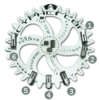
|
While at VCF Midwest 11 (2016), I briefly met
Korgo "Michael Goetzman"
the Founder of CYPHERCON and designer of the CYPHERCON 2016 Electronic Badge |


|
Atmel AVR butterfly
A badge featuring
|